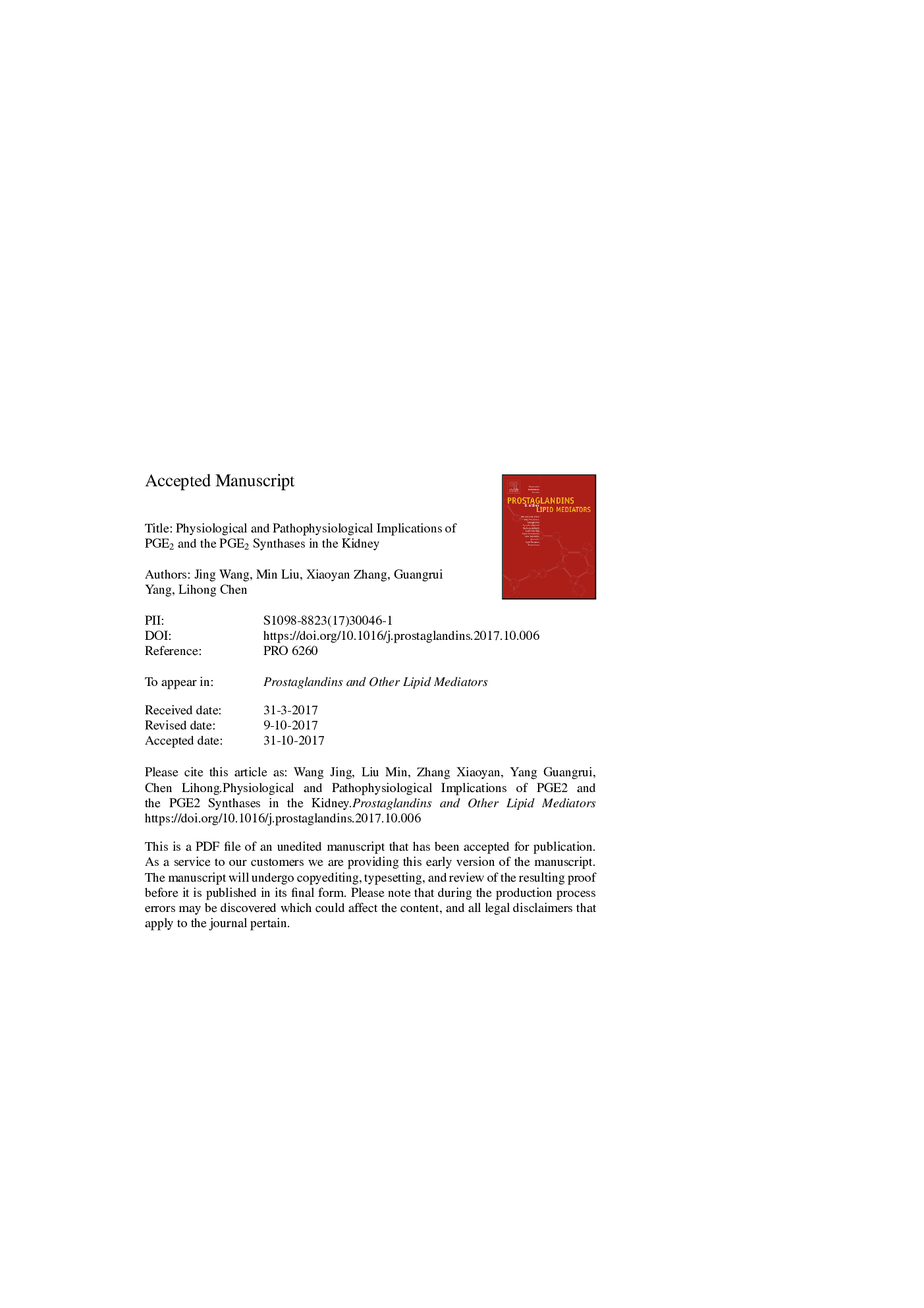| کد مقاله | کد نشریه | سال انتشار | مقاله انگلیسی | نسخه تمام متن |
|---|---|---|---|---|
| 8359111 | 1542199 | 2018 | 26 صفحه PDF | دانلود رایگان |
عنوان انگلیسی مقاله ISI
Physiological and pathophysiological implications of PGE2 and the PGE2 synthases in the kidney
دانلود مقاله + سفارش ترجمه
دانلود مقاله ISI انگلیسی
رایگان برای ایرانیان
کلمات کلیدی
COXCCDRNA-seqOMCDreads per kilobase of transcript per million mapped readsmPGES-1RT-PCRRPKMPGE2DcTPGESDTLMCDPLA2IMCDcyclooxygenase - آنزیم سیکلواکسیژنازphospholipase A2 - آنزیم فسفولیپاز A2 TAL - ازArachidonic acid - اسید آراشیدونیکThick ascending limb - اندام صعودی ضخیمkidney disease - بیماری کلیویRNA-sequencing - توالی RNAdistal convoluted tubule - تومور پیچیده دیستالcollecting duct - جمع آوری مجرایBlood pressure - فشارخونproximal tubule - لوله پروگزیمالmacula densa - ماکالا آبجوknockout - ناکاوتwild type - نوع وحشیRenal hemodynamics - همودینامیک کلیهReverse transcriptase-polymerase chain reaction - واکنش زنجیره ای واکنش زنجیره ای واکنش زنجیره ایprostaglandin E synthase - پروستاگلاندین E سنتازProstaglandin E2 - پروستاگلاندین E2outer medullary collecting duct - کانال جمع آوری مجرای خارجی مدولارMedullary collecting duct - کانال جمع آوری مدولاریinner medullary collecting duct - کانال جمع آوری مدولاری داخلی
موضوعات مرتبط
علوم زیستی و بیوفناوری
بیوشیمی، ژنتیک و زیست شناسی مولکولی
زیست شیمی
پیش نمایش صفحه اول مقاله

چکیده انگلیسی
Prostaglandin E2 (PGE2) is the most abundant prostanoid synthesized in the kidney and plays an important role in renal function. Physiologically, PGE2 regulates renal hemodynamics, water and sodium metabolism, blood pressure, and so on. As a well-known proinflammatory lipid mediator, PGE2 also substantially mediates renal injury under many pathophysiological conditions. Multiple enzymes are involved in renal PGE2 biosynthesis, including the three main PGE2 terminal synthases, i.e. microsomal PGE2 synthase-1 (mPGES-1), mPGES-2 and cytosolic PGE2 synthase (cPGES). In the kidney, mPGES-1 is highly expressed in the collecting duct where it is the dominant contributor of PGE2 biosynthesis and participates in blood pressure regulation and renal hemodynamic maintenance. mPGES-2 protein is mainly expressed in the renal cortex and the outer stripe of the outer medulla. cPGES is diffusely expressed in all nephron segments. Roles of mPGES-2 and cPGES in renal function have not been clearly characterized. Here we summarize the role of PGE2 in the kidney, highlight the contribution of the three PGE2 synthases, particularly mPGES-1, in blood pressure regulation and renal hemodynamics, and outline the contribution of mPGES-1 to kidney diseases. A clearer understanding of the role of PGE2 in the kidney could pave the way for development of new therapeutic approaches.
ناشر
Database: Elsevier - ScienceDirect (ساینس دایرکت)
Journal: Prostaglandins & Other Lipid Mediators - Volume 134, January 2018, Pages 1-6
Journal: Prostaglandins & Other Lipid Mediators - Volume 134, January 2018, Pages 1-6
نویسندگان
Jing Wang, Min Liu, Xiaoyan Zhang, Guangrui Yang, Lihong Chen,